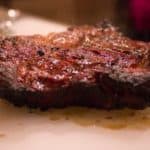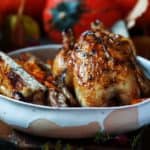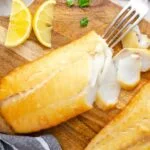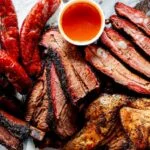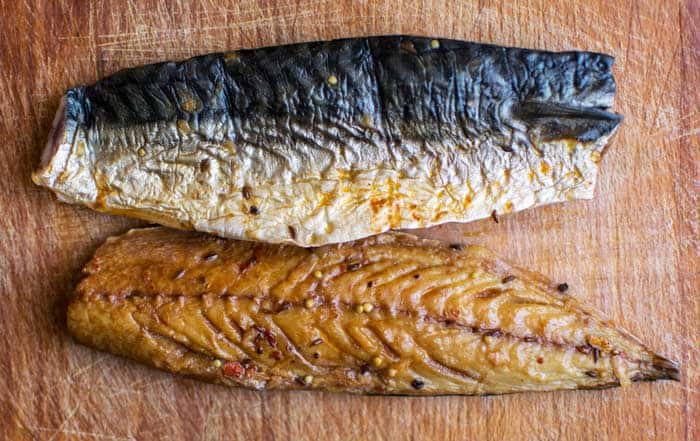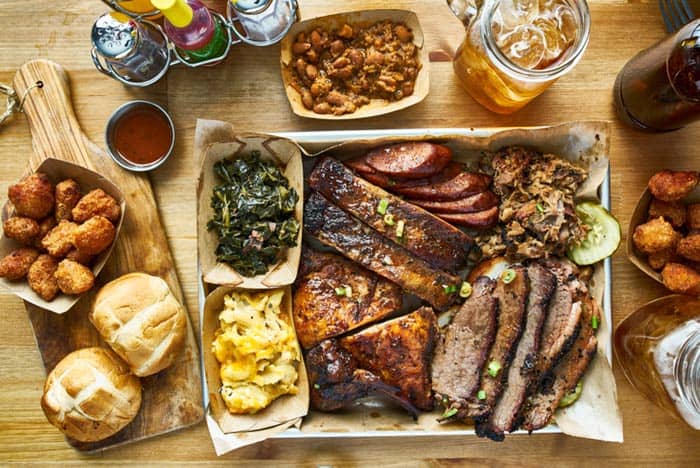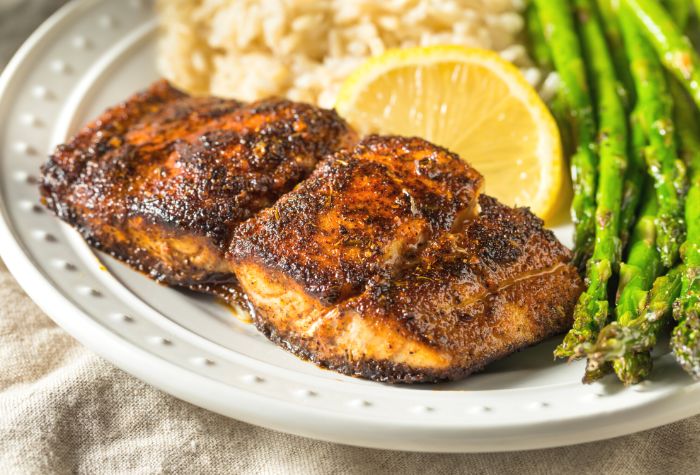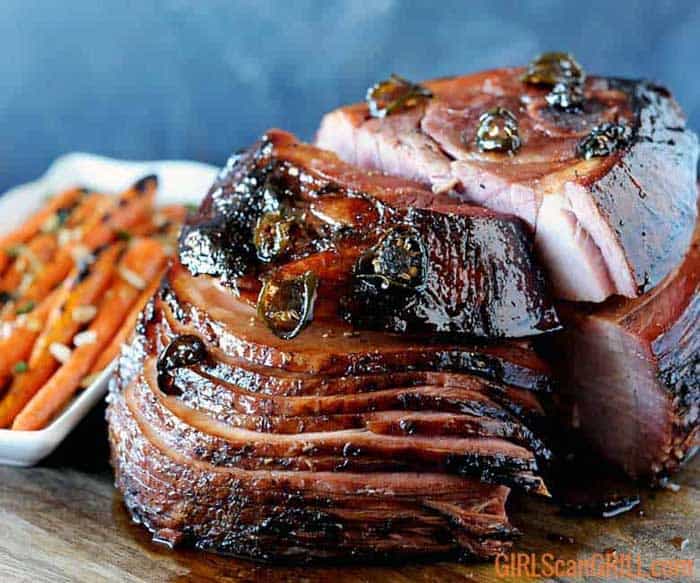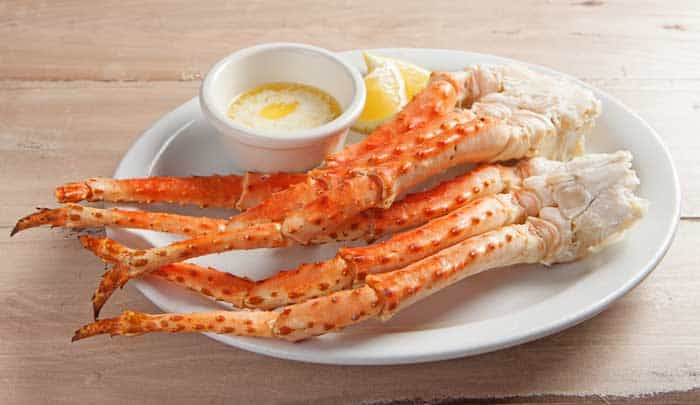Cold smoked salmon is the perfect way to enjoy one of our favorite plates of fish. Made with a salt-water brine and a sugar curing solution, before cooked at low temperatures, this smoked fish is unlike any other. Learn how to cold salmon the right way with our walkthrough and guide.
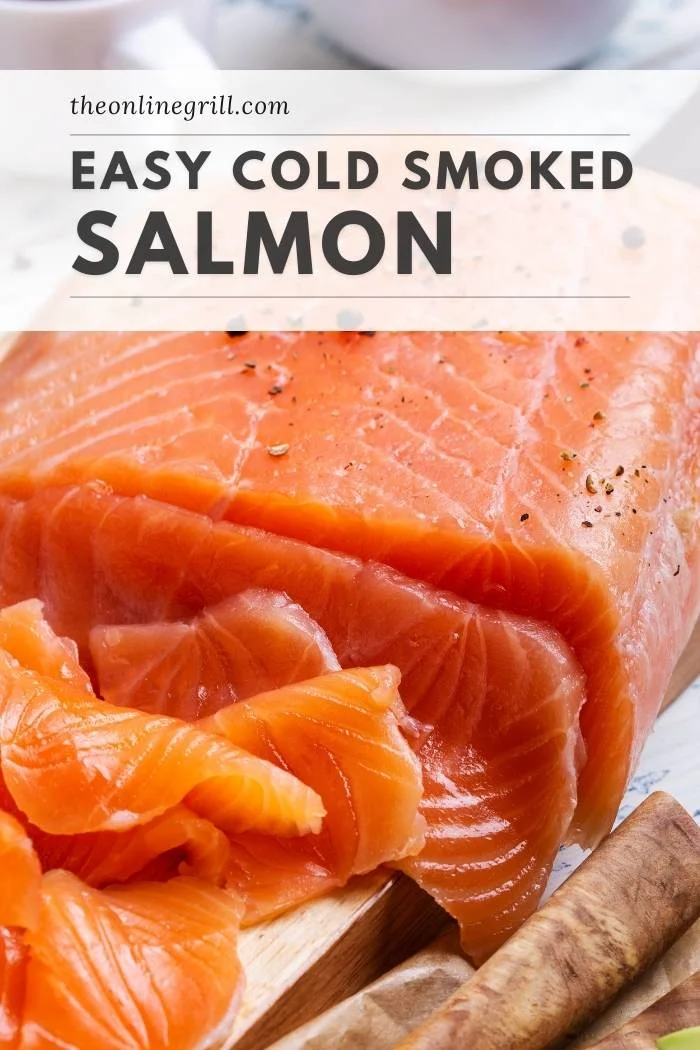
- Choose frozen salmon
- How to prepare salmon for cold smoking
- How to debone salmon
- How to cut salmon
- How to brine salmon
- How to cure salmon
- Keep the pellicle on
- Cook at 80°F
- Get the right type of smoker
- How to smoke salmon
- What’s the best salmon for cold smoking?
- What’s the best wood for cold smoking salmon?
- Cold Smoked Salmon
I’m a big fish lover, and out of all the different types out there, my favorite by far is smoked salmon.
It’s the perfect accompaniment to so many different kinds of meals, whether it be as a snack or a dinner. It can be salty, or creamy, and it’s downright delicious.
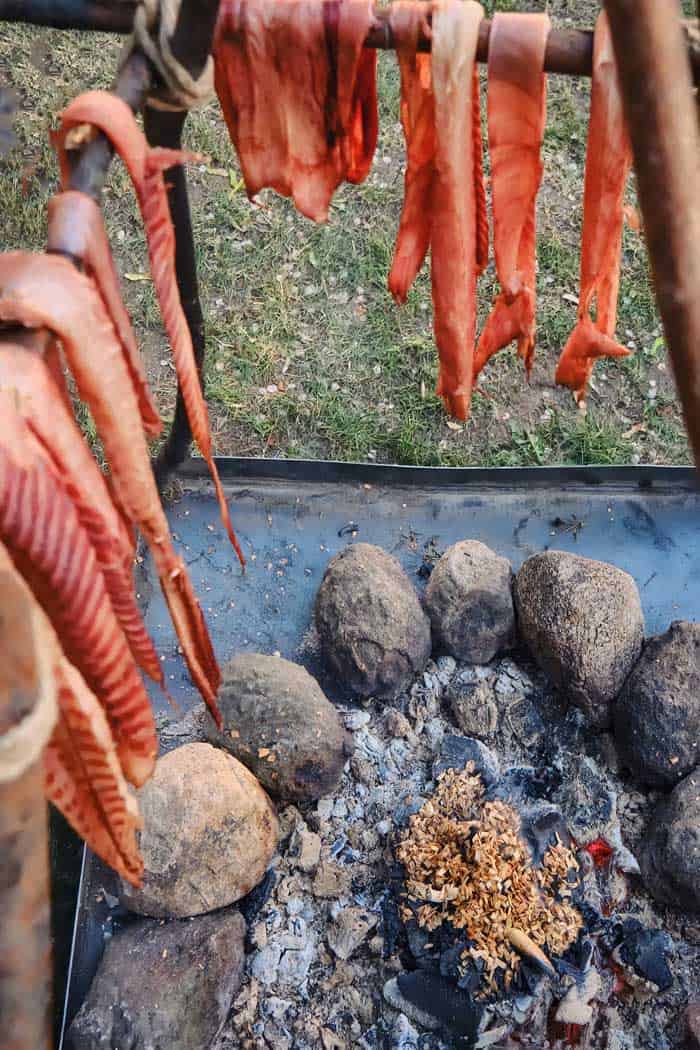
Despite its popularity, few people seem to know how to smoke it. The good news though is that the process of cold smoking is actually incredibly easy, and it’s something that I think a lot more people should know how to do.
I think perhaps some people’s anxiety over smoked salmon is that they’re handling raw fish. Luckily, the process of cold smoking makes it completely safe. Cold smoking is essentially a form of curing that allows all the proteins in the salmon to reconstruct, making it safe to eat (source).
Cold smoking salmon can easily be broken down into a few easy stages: Scaling, deboning and cutting. It’s then brined and cured, before smoking at a low temperature of 80°F for approximately 5 hours.
The process can take a long time, but the results are more than worth it. Here’s how to do it.
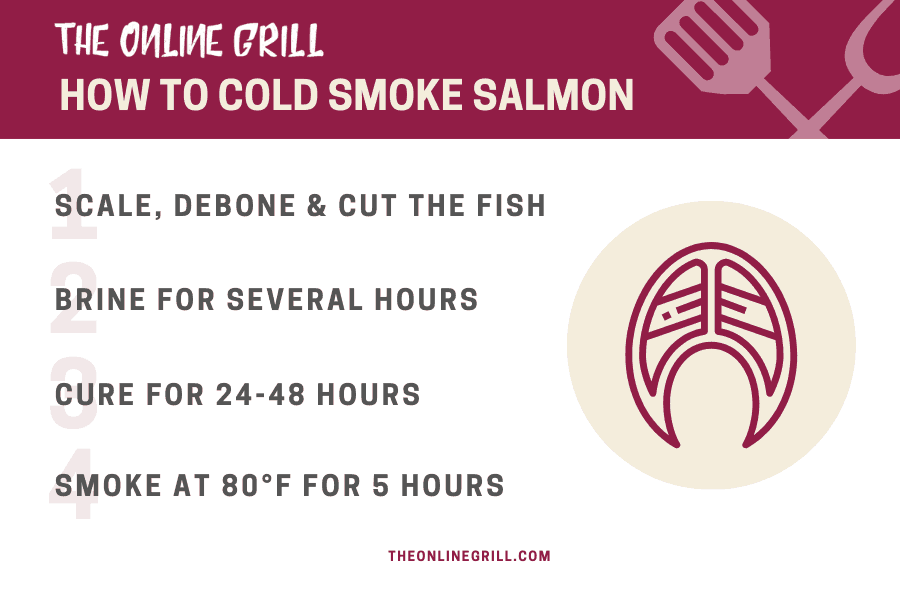
Choose frozen salmon
I realize this might seem counterintuitive, as fresh meat is infinitely better than frozen. Hear me out.
Frozen salmon is actually perfect for cold smoking. Why is this? Well, deep freezing fish at under 0°F (-18°C) helps kill some of the harmful parasites that are often found in raw fish (source). What you might not know is that it’s important for the fish to be frozen for a week to kill them.
Yes it’s true that cooking is just as effective at killing off unwanted bacteria. The problem is that cold smoking doesn’t reach the same temperatures as cooking would. This means that we can’t reach the high temperature levels needed to make the meat safe.
Freezing gives us a good workout, and also an alternative way to combatting the effects of bacteria.
As a side note, freezing fish also causes the water inside it to expand and burst some of the cell membranes. This is actually good because once the meat thaws, the liquid inside the fillet can drain. This makes the brining process quicker and easier, as our brining solution can permeate the flesh much more efficiently.

How to prepare salmon for cold smoking
Once your salmon has thawed you will need to start by scaling it. To do this, run the back side of a knife over the side of the fish to remove as many of the scales as possible. Rinse off the scales, and repeat until you have removed as many of them as possible.
How to debone salmon
Fish in general is so much better when it’s been deboned. It makes it easier to eat, but it also makes it cook far more efficiently.
Thankfully, you don’t need any special bits of equipment. Instead, you can do this with a simple pair of tweezers.
Trace your finger down the fillet and when you find a bone, use the pliers to remove it. Generally speaking, these bones are fairly evenly spread across the meat’s flesh so finding them shouldn’t be too difficult.
Once you’ve been through the fish, I recommend checking a second time just to make sure you have gotten as many of the bones as possible.
Check out this video for a great guide on scaling, filleting and chopping salmon:

How to cut salmon
A lot of people don’t bother cutting salmon prior to smoking, but I recommend you do.
Leaving the meat in whole form means that the smoke has a much deeper surface that it needs to permeate. This could result in your fish being smoked unevenly.
Instead, I recommend cutting it into long uniform strips. This will mean that it doesn’t need as long to smoke, but the flavors and textures will be even throughout. Just be sure to leave the skin on so that it holds together while smoking
How to brine salmon
A crucial part of meat preparation for a lot of different types of meat is brining.
Brining is a preparation process that helps protect meat against the risk of drying out while cooking. Smoking involves exposing meat to warm temperatures over a long time, so it’s important that we don’t allow too much moisture to exit the meat during this time.
The process involves submerging the meat in salt-water for several hours. During this time, the salt is absorbed into the meat, and helps lock in moisture.
One of the most important things to keep in mind when brining is water temperature. Temperature is so crucial during low and slow barbecue, and this actually extends to brining as well.
We need to use a water temperature of around 35 – 40°F (1.5-4.5°C). If we go above this then bacteria could develop in the meat. Go below and the salt won’t have the opportunity to do its job.
Allow your salmon to brine overnight for the best results. Once you have done this, remove it from the brine and rinse off any excess salt under a cold tap.

How to cure salmon
A lot of people confuse brining and curing, but they perform two very different functions.
Curing is a process that helps preserve meat, and protect it against bacteria growth (source). Not only that, but it can also help infuse a bit of added flavor.
It the case of cold smoked salmon, curing also has an added effect: It distributes the salt content of the fish evenly.
See, while brining is great, it can often result in a lot of salt bunching up near the center of the meat. Curing helps address this by spreading it more evenly through the fillet.
Just like with brining, curing requires a mix. I recommend a dry mix of 20% molasses sugar (or brown sugar if you don’t have any) and 80% Himalayan salt (also simple rock salt is fine) to sit your fillets in.
Spread one-third of your cure in a baking dish. Ensure that the dish is only just large enough to hold your salmon fillet. Carefully place your fillet in the tray with about half an inch between the fillet and the outer rim of the dish. If you have cut your fillet into pieces then try to allow about half an inch between each piece as well.
Pour the remainder of the cure on top of the salmon, ensuring that everything is covered completely and there are no gaps.
Store for 24 hours in the refrigerator, or at least overnight. The longer you allow it to cure, the better the results will be. Although don’t allow it to cure for longer than 48 hours.
Keep the pellicle on
After all the steps above one of the results you should notice is a layer of pellicle forming on the outside of your fish. This is a thin layer of liquified proteins that forms a clear coat over the entire fillet. This is important because it helps keep a lot of the liquids in the fish, helping to prevent it from drying out during smoking.
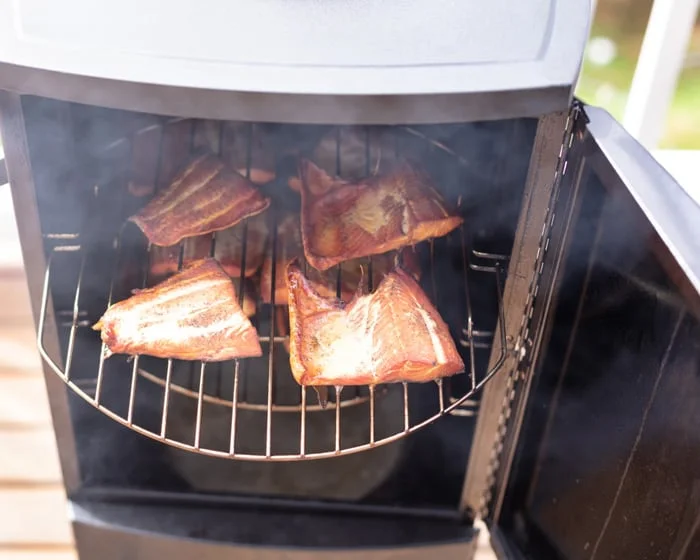
Cook at 80°F
When it comes to BBQ smoking, keeping heat levels as perfect and consistent as possible over a long time is crucial.
In the case of cold smoking salmon we need to avoid exceeding 80°F (27°C). Anything over and we run the risk of cooking it, which isn’t what we want for this type of meat preparation.
If you are using a regular BBQ smoker, then I recommend investing in a good cold smoke generator.
Get the right type of smoker
Unfortunately, not all types of BBQ smoker are capable of this type of cooking, so you need to find out if yours is ahead of time.
While charcoal and wood smokers are often the go-to for many hardcore BBQ fans, a large number of them aren’t built for cold smoking. Contrastingly, a good number of electric smokers can.
There are some specific models that are perfectly suited for this type of cooking. One is the Weber Smokey Mountain. Electric or propane smokers also offer an easy way to smoke fish.

How to smoke salmon
Pre-heat your smoker and remove your salmon from the dish, and rinse off any excess brine under a cold tap.
When your smoker is at our target temperature of 80°F (27°F) open up the door and place your salmon on the cooking racks, or wire rack. Make sure that you leave a good amount of room around the salmon to allow good air flow and smoke circulation. Try to allow it to have an equal amount of space in front of it as well as behind.
Your salmon will need about 5 hours of smoking, but the real key will be that it’s lost about 15-20% of its weight
Your salmon will be ready to eat as soon as it’s done, but it’s actually best if you transfer it to the refrigerator once done and leave for 4-6 hours before serving. Once it’s ready, use a long sharp knife to cut the salmon diagonally into paper-thin slices.
If want to store it then I recommend vacuum sealing it and storing in your refrigerator. If you need to freeze it then it should last up to a year.
What’s the best salmon for cold smoking?
Frankly, a lot of this will come down to personal taste. There a wide variety of salmon types out there, and the ones available to you will be limited by geography as much as price.
Some of the varieties out there are King, Scottish, coho, sockeye, chum, and Atlantic (source). It’s worth noting that different types of salmon will vary in the amount of oil and flavor they carry. The more oil they have, the more buttery flavor and moisture they will carry.
Species like Chum or Pink salmon tend to be low in oil content, whereas Kind and Sockeye are far richer in oil content and flavor.
Regardless of which type you choose, it will always be the case that fresh is best. Fish spoils really quickly, so I recommend buying fresh before then deep freezing it for a week to rid it of parasites and bacteria before cooking.
What’s the best wood for cold smoking salmon?
While woods like hickory are great for traditional more robust meats, like beef and pork, I would try to avoid these as best as possible. They will overpower the more delicate flavors of the salmon, and will very quickly cloak it in a taste much better suited to red meat.
Instead, I recommend going for either of the below:
- Alder: Much more delicate, and even has some sweet notes. Perfect for almost any type of fish.
- Oak: A bit more traditional and a very popular choice. Has a heavy level of smokiness, but if you use a modest amount then it can match perfectly with the strong flavors of the salmon.
If neither of these are to your liking then be sure to check out my guide to salmon smoking woods here.
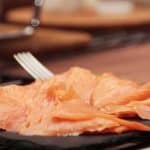
Cold Smoked Salmon
Ingredients
- 3-4 lbs salmon fillet
For the brine
- 1 gallon water
- 2 cups kosher salt
For the cure
- ¼ cup molasses sugar
- 2 cups rock salt
Instructions
- Scale the fish on both sides with the back of a knife
- Use a pair of tweezers or pliers to remove as many of the bones from the fish that you can. Trace your finger down the fillet to help you find them.
- Cut the salmon into long uniform strips
- Create the brine by mixing 1 gallon of water and 2 cups of salt. Submerge the fillet in the mix and transfer to refrigerator. Leave overnight, or for 12 hours.
- Remove fillets from brine and rinse with cold water. Transfer to large plate.
- Create cure by mixing molasses sugar and rock salt. Spread generously onto salmon.
- Cover with plastic wrap and transfer to refrigerator. Leave for 24 hours.
- Remove from refrigerator and rinse with cold water.
- Heat smoker to 80°Add chosen wood chips.
- Place salmon fillets on rack, or pin to rack so they hang. Cook for 4-5 hours.
- Serve with your choice of garnish

